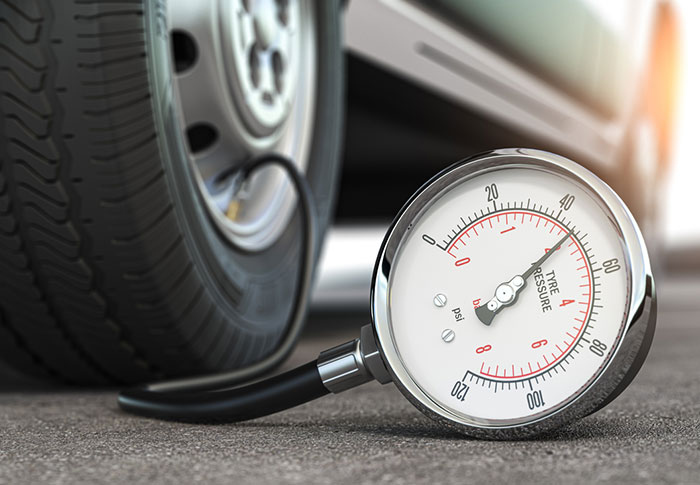
Tyre pressure monitoring systems play a vital role in enhancing on-road safety. Designed to monitor the air pressure inside a vehicle’s tyres and provide real-time information to the driver, this revolutionary system helps prevent the potentially dangerous consequences of improperly inflated tyres. However, for a TPMS to function optimally, it’s important Calibrating Tyre Pressure Monitoring System regularly – read on to find out more.
When a TPMS is not properly calibrated, it can lead to a range of issues that can have serious consequences for drivers.
One of the primary effects is decreased fuel efficiency. Underinflated tyres create more rolling resistance, which forces the engine to work harder and consume more fuel. This not only increases fuel costs but also contributes to higher carbon emissions, negatively impacting the environment.
Also, an improperly calibrated TPMS can fail to detect when a tyre is significantly underinflated. This can be dangerous, as underinflated tyres are more prone to blowouts, uneven wear, and reduced handling and braking performance. In the event of a sudden tyre failure, the driver may lose control of the vehicle, increasing the risk of an accident.
Proper TPMS calibration also plays a critical role in maintaining the longevity of tyres. Underinflated tyres can wear out more quickly, leading to the need for premature tyre replacements, which can be a significant expense for vehicle owners.
To avoid all of this, it is essential to have your TPMS regularly checked and calibrated by a qualified technician.
Signs It’s Time To Have Your TPMS Calibrated
Frequent warning lights or alarms – If your TPMS warning light or alarm is alerting you frequently, even when your tyre pressure is within the recommended range, it may indicate a need for calibration.
Inconsistent tyre pressure readings – If the pressure readings displayed on your dashboard are significantly different from the actual tyre pressure, it’s a sign that your TPMS needs to be recalibrated.
Inaccurate low-pressure warnings – If your TPMS is triggering low-pressure warnings when your tyres are properly inflated, it’s a clear indication that the system requires calibration.
Newly replaced tyres or wheels – Whenever you replace your tyres or wheels, it’s essential to have your TPMS recalibrated to ensure accurate readings.
How to Calibrate a Tyre Pressure Monitoring System
Depending on the type of TPMS fitted to your vehicle, there may be different steps needed to calibrate it. Some require you to find and press a reset button, and then drive the vehicle for a set period of time. Others may require attention from an automotive professional.
To calibrate a Safe T Tyre aftermarket TPMS, simply follow the instructions that come included in the box. For expert help you can contact our friendly team by calling 1800 499 383 – we are more than happy to assist with any troubleshooting problems you may have.
Don’t Overlook the Importance of TPMS Calibration
By keeping your tyre pressure monitoring system properly calibrated, you can enjoy improved fuel efficiency, extended tyre life, and enhanced handling and braking capabilities.
Regular calibration helps detect any air pressure issues early, allowing you to address them promptly before they lead to more serious problems. Make it a routine part of your vehicle’s maintenance schedule to keep your car running safely and efficiently for years to come!
Safe T Tyre is Australia’s trusted destination for tyre pressure monitoring systems. If you have any questions or would like to purchase a TPMS, reach out to us online or call 1800 499 383 today.

